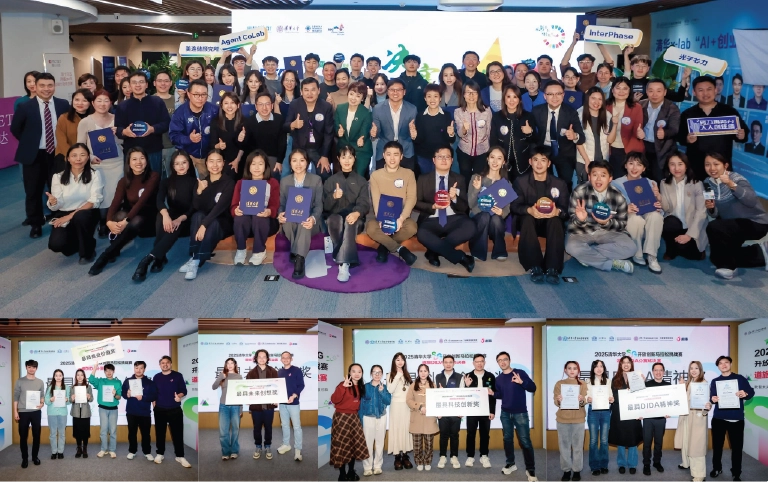
Talking with international hoteliers during the recent ATM Dubai show, Dida’s CEO Rikin Wu drew special attention to the trend that “Chinese traveler demand and the distribution landscape have pivoted significantly since before the pandemic”.
As a company founded and headquartered in China, Dida is intimately familiar with the Chinese distribution landscape and Wu went on to caution that hoteliers must “adapt to the new Chinese market needs or miss out on the world’s biggest outbound market”.
This is because in recent years, the Chinese tourism industry has undergone profound transformations driven by the explosive growth of Chinese social media and shifting consumption patterns among younger generations. Emerging travel trends like “reverse tourism” (eschewing popular destinations for lesser-known locales) and “marathon-style check-ins” (rapid, densely packed itineraries) have gone viral on platforms like Douyin (TikTok’s Chinese counterpart) and Xiaohongshu (Red Note), reshaping how Chinese travelers explore the world.
Against this backdrop, global hoteliers face a critical question: how can they capture opportunities in China’s dynamic, fast-evolving market? Explaining this new era of Chinese outbound tourism the team at Dida have been drawing hoteliers’ attention to three important factors:
1. B2B competition: from ‘middlemen’ to ‘direct connections’
The traditional advantage of travel agencies — leveraging information asymmetry — is fading. Customized and independent travelers now connect directly with brands via social media. While China’s outbound travel demand surged 60% year-over-year in 2024, traffic sources have shifted from traditional channels to content platforms like Douyin (TikTok ChineseVersion) and Xiaohongshu (Rednote). For example, a Shanghai-based travel agency saw a 170% month-on-month increase in brand searches and a92% boost in customer acquisition after running targeted Xiaohongshu campaigns.
2. Hotel competition moves upstream: from ‘price wars” to “emotional battles”
At the discovery stage of the travel planning lifecycle the market is progressively observing a shift away from hotel marketing via search engines and OTA listings to the ‘content seeding stage’ of consumer decision-making. Hashtags like #Citywalk and #ReverseTourism have garnered over 100 billion views on Douyin and Xiaohongshu, with users increasingly swayed by influencer travel vlogs and brand storytelling.According to Dida, 74.3% of travelers rely on short videos for travel inspiration and discovery, and 53% are engaged by what social media influencers post online.
“Brands now use authentic, relatable content to break through on social media and funnel traffic into private communities for exclusive offers and travel itinerary planning” said Xu Langui, Dida’s Regional Head for China.
3. Consumption drivers:From ‘functional needs’ to ‘emotional value’
In terms of travel discovery via social media, younger Chinese travelers arei ncreasingly no longer settling for ‘comfortable stays’ but rather seeking out the latest, most novel trends or searching for more unusual ‘off-the-beaten track’ destinations. During the 2024 Lunar New Year, bookings surged for trips to chase the Northern Lights or explore niche cities. “Emotional value has become the core driver of consumption. Users prefer brands that resonate with their aspirations,” noted Langui.
Dida’s solution: High-Value Chinese market reach via digital marketing + localization
To navigate China’s complex market, Dida offers two main services to help hoteliers globally reach travelers from the world’s biggest source market:
1. Deep Client Insights: With over a decade of localization expertise, Dida covers 70% of China’s outbound travel buyers through regional teams in North, East,South, and Southwest China. In 2024 alone, Dida conducted 12,000+ clientvisits and deep-dived into 1,000+ top accounts.
2. Integrated marketing & sales model: Going from brand awareness to conversion: Under traditional distribution models, hotel groups face a "brand-performance disconnect" - marketing teams chase visibility metrics while sales departments prioritize conversions, often driving rising customer acquisition costs. Dida’s approach unifies these siloed objectives under a single goal: market share expansion.
An example of this approach is Dida’s successful collaboration with ONYX Hospitality Group, a leading hotel management company in Southeast Asia. Ms. Jihai Kim, Vice President GlobalSales at ONYX commented:
"The rapid evolution of the Chinese market and the shift in consumer decision-making logic have posed unprecedented challenges for international hotel brands. Our partnership with Dida has unlocked a new pathway to precisely reach the Chinese market.
Through Dida’s ‘integrated marketing-sales strategy,’ we’ve achieved a closed-loop transition from brand exposure to sales conversion. Since collaborating with Dida, our market share in China has grown year over year, fully demonstrating the synergistic effects of Dida’s localized operations and digital marketing. Moving forward, we look forward to deepening data-driven refined operations with Dida, particularly in tapping incremental opportunities within niche markets, to continuously strengthen our brand’s competitiveness inChina.”
Summarizing the importance of such massive shifts in consumer behaviour and the distribution landscape, Rikin Wu highlighted that “there are 1.4 billion social media users and there’s a whole range of platforms they are on, but you must unify this scattered digital traffic landscape into a cohesive strategy –those that do this, telling stories that appeal to Chinese cultural needs and views, will be the real winners over the next few years, whilst those that don’t may very likely miss out”.





